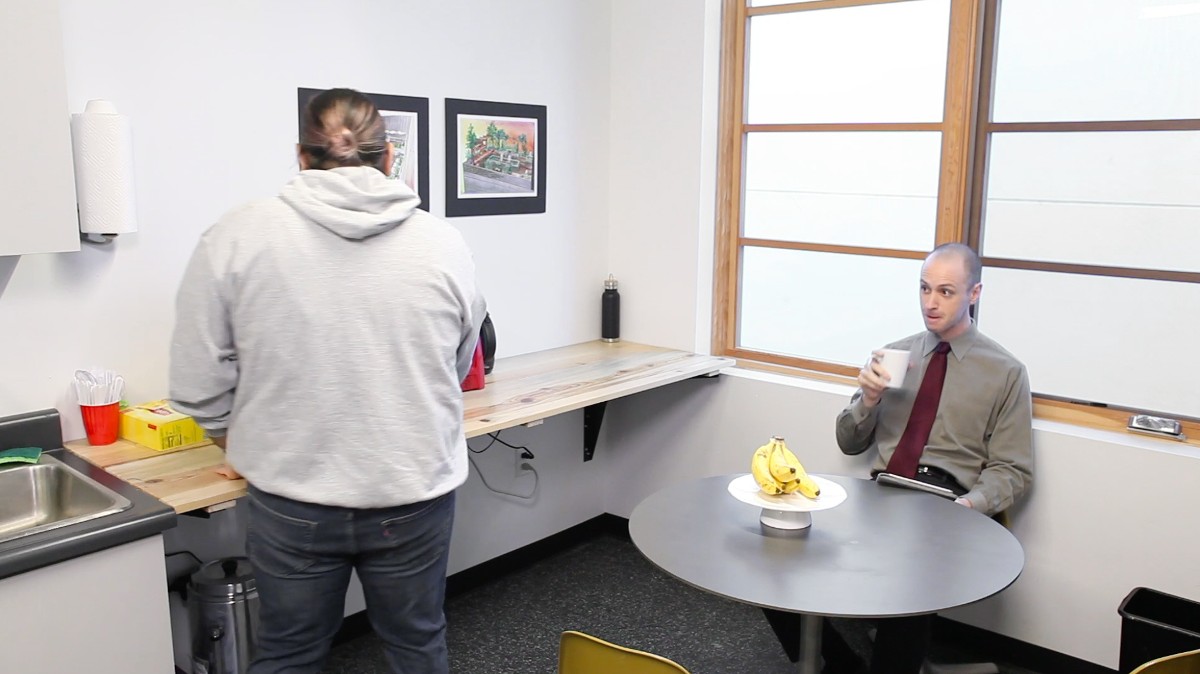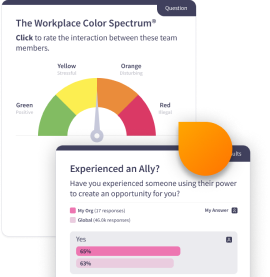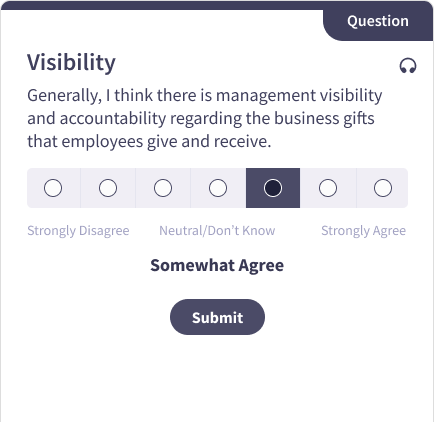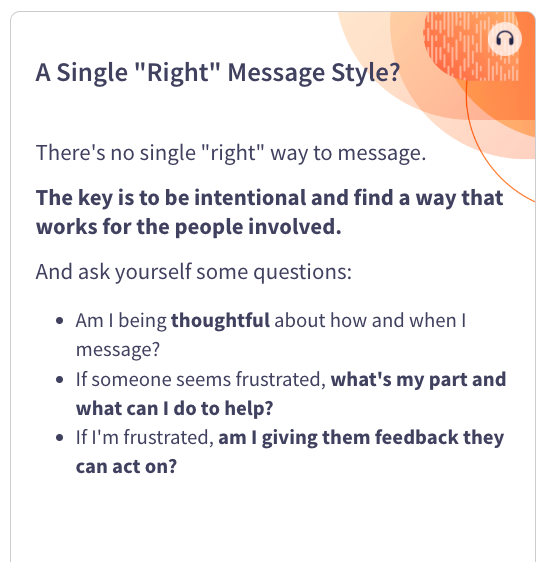
Recognizing Everyday Bias
Microaggressions are comments or actions that unintentionally, but subtly reinforce a bias or stereotype about a specific group or characteristic. Learning to identify microaggressions when you see them is a key step in stopping and preventing them.
Microlesson DescriptionThis microlesson teaches employees and managers how to identify and stop microaggressions. Microaggressions are comments or actions that unintentionally, but subtly reinforce a bias or stereotype about a specific group or characteristic. The video in this microlesson shows how one person unintentionally makes an assumption about their colleagues based on their ethnicity.
This microlesson is part of Emtrain’s skill-building microlessons and teaches the skill of mitigating bias.
Key Concepts- How to interpret emotional expression
- How to work with reserved and expressive people
- How to avoid making assumptions based on emotional expression
Microlesson Features
- Employee sentiment pulsing questions that provide leaders with insights into their workforce's core cultural competencies
- Emtrain's Expert Answers tool, enabling employeees to submit anonymous questions about sensitive issues.
- Rich, contemporary video scences illustrating key concepts through realistic scenarios
- A data driven, skill-based approach to eLearning that establishes a shared language for employees.

Frequently Asked Questions
Below are answers to common questions that employees and managers have about this topic. These FAQs provide a preview of what you’ll learn in this microlesson and why it matters.



